Reiner Nagel and the Berlin Infrastrukturbau kultur
Although the word “urbanity” is commonly used to indicate the kind of character we expect to find in the urban realm, it is not clear what this specific quality is actually made of. Does it apply to buildings, to the spaces among them, to their images, to the social interactions they allow, to all of the forementioned? We know by experience and literature that there’s no such thing as two identical cities, and still we feel the urge to find concepts and measurements that allow us to understand different urban facts as working under the same laws. Not only this effort seems to be pointless – urban receipts can’t be simply transferred from one city to the other -: it also collides against the evidence, here so clearly expressed by conrad-bercah, that the only constant of a city is change. Once confronted with the unpredictable transformations that characterize urban matter, long-term planning tools such as the “Piano Regolatore Generale” (since its approval in 1995, Turin’s PRG has already been modified 279 times) reveal their intrinsic weakness with respect to the possibility of hosting change and fighting land speculation. Observed in this context, conrad-bercah maintains, that of Berlin seems to be a case worth learning from, as since the beginning of the XX century its planning strategies have been based on a deep understanding of the urban realm‘s intrinsic dynamism – as summarized by Martin Wagner’s motto: ‘each generation should be able to build its own urbanity’ – as well as on the awareness of the fundamental role that infrastructures have in offering the possibility to fulfill such social task.
Davide Tommaso Ferrando
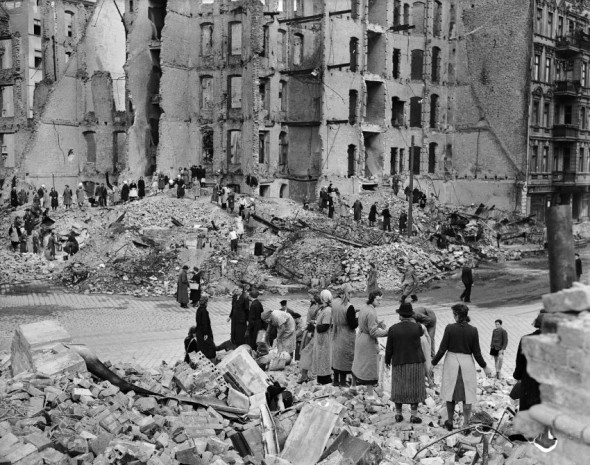
Reiner Nagel is the director of the Federal Foundation of Baukultur, a platform with three major aims: (1) to strengthen awareness of good planning and building, (2) to make the achievements of planning and construction in Germany better known, (3) to stimulate discussion throughout the country about quality standards in urban planning and the construction and housing industries. Prior to taking this position in 2013, he was head – from 2005 to 2012 – of the urban development and public space planning divisions of the Berlin Senate Department for Urban Development.
I spoke with Nagel in November 2013 about the invisible layers of Berlin’s urban value. The value of our conversation lies, in my judgment, not just in its content but also in its ‘tone’, as the latter says the most about the long-standing value of Berlin’s unique – and not fully acknowledged (or understood) – ‘Infrastrukturbau kultur‘, which the following video will hopefully make apparent.
Berlin’s culture of infrastructure building rests on a simple, but potent ‘three-legged stool’ that takes advantage of the power of geometry and mathematical ratios to make life comfortable for every resident of a dörfer-großstadt, 44% of which is made up of green areas.
Urbanity, it declares, is best understood and governed by breaking responsibilities down to a manageable size. It makes more sense to talk about an archipelago of 12 dörfer (villages) or zäune (old German for towns) of 300,000 dwellers each rather than one conurbation of 3,500,000 citizens. So size does matter.
As does walkability, (second leg) which means it makes sense to establish a principle whereby every dweller cannot be more than 500 meters away from the various elements of the urban infrastructure: bus stops, hospitals, parks, green areas, shops, libraries, and everything necessary to simplify life.
Personal health (third leg) is ensured by another simple ratio: 30 square meters of green space for each town dweller.
This ‘three-legged stool’ describes a somewhat surprising theory. It puts a lot of emphasis on being able to lead a ‘dörfer-like’ lifestyle, rather than being a citizen of a metropolis (a term that, since the 1926 screening of Fritz Lang’s movie at the Berlin Zoo-Palast, is typically associated with the very opposite of what Berlin life stands for).
It also suggests that dörfer-like lifestyles are healthier and more fun than the metropolitan lifestyle one can find, for example, in the so-called world-cities of global finance, such as New York, London, and Tokyo. There, as Joseph Rykwert aptly put it in his 2014 Gold Medal speech, urban life is in the process of ‘being castrated’ by the demands of finance itself, which leaves no room for the members of the creative community who are actually responsible for making these places world-cities in the first place.
The ‘three-legged stool’ suggests that – ten years ahead of Fritz Lang’s schedule – it might be time to leave today’s finance-ruled metropolis culture and start to consider the numerous merits of the dörfer-großstadt kultur.
The culture of infrastructure also entails managing traffic and establishing procedures that make it possible to use public transportation to move rapidly (bus) or slowly (train) from dörf to dörf. But the point I am interested in making is another one altogether.
Watching the video interview, I believe it will be hard not to agree on one evident fact: the tone of Nagel’s answers reveal the confidentiality he himself has with most of the points he makes. For him, they are such basic, undisputable facts of life that, in many instances, he appears almost stupefied by the necessity of asking questions (like mine).
Intrigued by the disparity of our reading of human affairs in general, and by the possibility of actually being able to truly govern urban issues in particular, our conversation provoked a ‘moment of anxiety’ in me. I was unaware of the historical reasons that could provide a convincing explanation of one evident fact: the Berlin culture of infrastructure in which Nagel swims so naturally must have had a long, torn history.
At first I thought it was just a further expression of the fact that, like for so many things German, one may in fact believe that human affairs have a shot at being discussed in light of reason, which is to say rationally, instead of recurring to hyperbole or sensationalism. Or sheer irrationality. But this, somehow, failed to prove convincing enough to set my mind at ease.
Everything changed on February 18, 2014 when, in a one-hour-long phone conversation with Harry Cobb, I understood, as usual, where to look to find some convincing ‘explanations’ for my unrest. I understood that I simply had to direct some attention to the urban work carried out in Berlin in the second half of the 1920s by one of the few teachers of Cobb’s former Harvard training he respected: Martin Wagner, the influential Berlin Stadbaurat―chief of the Berlin City Planning Department.
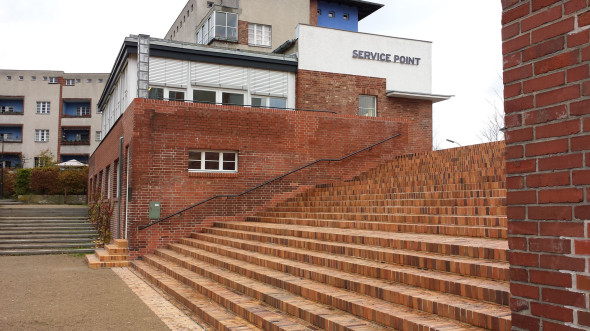
‘I think the dynamic construction of our urban planning system, from its legislative basis to the technical and financial possibilities for its implementation, is much more important than designing ideal plans for the next 100 years. It’s much more important than continuing to chase . in anguished hysteria – an idealness that won’t last longer than from twelve to noon’.
The accelerated pace of the Großstadt leads Martin Wagner to take a position that reflects his well thought out belief: in modern times, it is no longer possible to ‘have values carved in stone for eternity’.
Wagner likens 1920s Berlin in particular and the Großstadt in general to a chameleon, an ‘earth’ lion that sheds its coat with every new season.
Accordingly, he thinks that urban planning has to reflect the constantly changing land values and the changes increased or decreased traffic subsequently bring about.
In the 1920s, traffic coincided with the image of the modern city itself, and all the Großstadt inhabitants, Simmel included, fell under its spell. Wagner defines traffic as ‘seven-league boots’ that each one of us can put on when we want to reach – fast – the quiet of the countryside or the ‘buzz’ of the city.
The organization of traffic, together with the need to develop the local public transportation network, was fundamental to Wagner’s leadership in building a truly unique Weltstad (world-city) as a ‘happy place of happy work and happy leisure’.
With this goal in mind, he acted as authentic ‘public servant’, becoming the driving force behind most of the most important urban infrastructures of Berlin: the expansion of the subway network, the planning for the Square of the Republic in front of the Reichstag, the renovation of Alexanderplatz, the concept for the exhibition center in Charlottenburg, the master plan for new fair and for the beach resort system at both geographic ends of the conurbation, namely Wannsee Beach in the West and the lido at Müggelsee in the East.
Wagner’s role can be understood from these premises: he was the one responsible for a virtuoso performance that, in less than five years, would lead to the construction of modernist housing projects in interwar Berlin, such as Berlin Britz, to name but one, a project that is now recognized as a UNESCO World Heritage Site and that the Nazis, who forced him out of office in March 1933, could not quite bear.
Wagner put a fundamental issue on the table: ‘How much does Berlin cost?’
This question resonates today as it did in the 1920s, and it is instrumental in pondering the fixed capital of a large town, the annual investments being made there to acquire land as well as demolish and construct buildings. Wagner, in other words, posed the problem of the city budget, with regard to which he constantly stressed the need to manage urban development as if it were an industry.
Influenced by Max Weber, Wagner saw the management of the city’s urbanity as though it were a company of which he himself – the Stadbaurat – was CEO. As the CEO of the city, the Stadbaurat had to be ‘actively engaged’ in honor of the city, the public administration of which coincides with the community.
Wagner does not talk about urbanism per se.
Wagner talks about ‘dynamic urbanism’, in which all the variables are in constant motion.
Wagner’s original theoretical contribution to urban studies boils down to two, powerfully convincing ideas: urban matter can only be in permanent flux, and it can only be approached with a mind frame that refers to a dörfer-großstadt kultur. There is no need for an overall master plan for urbanity because the ‘time’ of this sort of tool is at odds with the specific time of urbanism.
Wagner proposes engaging with the transitional quality of urban matter in a positive way. He thinks the same thing about the relationship between Zivilisation/Kultur – both terms have to be seen as spaces in which the public servant can apply entrepreneurial skills.
The dynamic condition of urban matter makes it impossible to conceive an infallible model, even at a theoretical level. Any given model can be revoked, changed, altered, or improved at any given time. Wagner’s (optimistic) motto is this: ‘each generation should be able to build its own urbanity’. Two, paired, Wagner-stimulated interventions – both of which display a significant array of curved lines that seem well suited to making large crowds feel at ease – show how the dynamic of the dörfer-großstadt kultur actually works.
The first pair is formed by Siedlung Britz and Alexander Platz, which, being two different versions of a dörf, show the full potential of Wagner’s ‘new community’ aspiration. The second pair is made up of the new fair and Wannsee beach resort system, which, being developed as complementary dörfer, have to be taken together. The new fair and Wannsee are two urban infrastructures intended to house, simultaneously, the collective life of the masses, or leisure time to counter the time spent working.
For Wagner, the leisure structures at Wannsee have the same urban importance as the workplace. The City Planning Department should not concern itself with the places of industrial production, which it cannot control. It should concern itself with (1) social services, (2) parks and free-time structures, and (3) infrastructure because these are all self-sustaining endeavors.
Wagner conceives of infrastructure in terms of economic benefit to urban dwellers as a whole. ‘They raise workers’ earning power and age limits, they lower the burden of public spending on hospitals.’ Infrastructure has to serve both the realms of production and leisure time. Put in another way, infrastructure produces development outside the realm of development.
It’s a simple, clear attitude that captures, in a single stroke, the details of a ‘Kultur’ that should inform all future development of Berlin: the Berlin Infrastrukturbau kultur ― the Berlin culture for building urban infrastructure. This is the infrastructure upon which Weltstadt worthy of its name should be built.
The value of this Weltstadt is not derived from old structures of ancient times. It stems from very specific undertakings: the construction of the appropriate amount of social housing, hospitals, social services, offices, leisure time structures, markets, squares, and individual and collective transportation systems, which are all a sort of man-made ‘civilization of the natural landscape’.
The value of the Weltstadt is not merely economic. It is (or should be) ethical, social, and political.
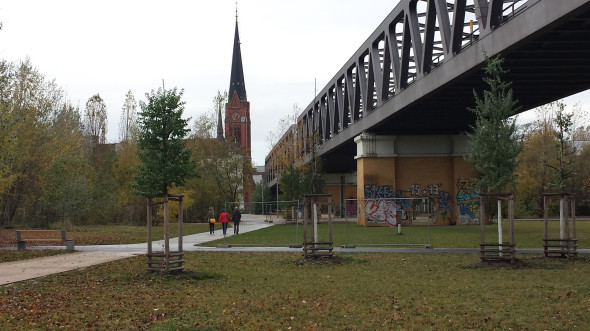
Urban infrastructure is normally defined as the basic physical and organizational structures necessary for the economy of an urban system to function: roads, bridges, water supply, sewers, electrical grids, telecommunications, and so forth.
It can also be defined as ‘the physical components of interrelated systems providing commodities and services essential to enable, sustain, or enhance societal living conditions’, or as the set of interconnected structural elements that provide framework supporting an entire structure of development.
It is normally considered an important term in judging a country or region’s development. Viewed functionally, infrastructure facilitates the production of goods and services and the distribution of finished products to markets, as well as basic social services such as schools and hospitals; roads, for example, enable the transport of raw materials to a factory.
In Berlin, however, there’s still today another (more interesting) way of talking about infrastructure. In Berlin today, the culture of infrastructure building lies in showing the social and anthropological importance and multiple ways that infrastructures shape human society and vice versa. This anthropological approach finds its root in Martin Wagner’s key discovery: the end of the dichotomy between the city and the countryside, a dichotomy that is replaced by the urban continuum.
The Schwerpunkt of Wagner’s thesis rests upon the dynamics of island culture and is an attempt to give a contemporary face to democracy. This face also reflects Hugo Häring’s belief that urbanity mirrors political and intellectual will and cannot be achieved by pursuing an immediate political dividend. This face should also reflect the value of the times, which is not durability but transformability. It is an urbanity with a short life, or an urbanity whose life keeps changing, accommodating the changes of contemporary life as they develop. It is an urbanity that can seize dynamic opportunities as they arise. You can’t stop Krupp from leaving Essen and causing the city’s land values to decrease. It is the interference of industry and production techniques that create value and give value to land.
It is a dynamic model based on permanent Umbau―reorganization that doesn’t think twice about demolishing even the Reichstag, if it is inadequate in size.
It is an urbanity that is the opposite of the one proposed, for example, by an ‘urban’ theoretician like Aldo Rossi who always considered it (and drew it) like a large, permanent still life in which nothing moves, in which what matters are the shadows, the distances, and the space trapped by his ‘blocked volumes’―as if it could be a sort of archive of emotion imprisoned by non-modifiable archetypal structures.
It is an urbanity that has little to do with what Rossi himself described in Architecture of the City (1966), a book in which Rossi is only able to portray Berlin as an interrupted series of Mietkasermen, as if Berlin were still facing the housing problems listed in the Werner Hegemann’s polemical book from 1930.
Das neue Berlin is not eine Steiner Stadt.
On the contrary, it is a place for work, exhibitions, and leisure time, all at once: a new ‘invisible’ urban reality that no film can (still) capture.
Berlin is still today a work in progress that does not allow itself to be photographed or imprisoned in a film. It remains a conceptual speculation — or a planning concept waiting to be implemented.
Is this die BerlinerGeist? The spirit of a new Weltbürgergeist (citizen of the world) producing exceptional performances?
The BerlinerGeist seems to have, to this very day, the ability to provide infrastructure that meets the needs of the present as they emerge and develop.
It is an ‘ability’ that does not rule anything out, major acts of demolition included.
It is an ability that does not exclude a Tabula Rasa approach to achieve a Tabula Sana goal: the overall mental and physical well-being of an un urban environment and its dwellers.
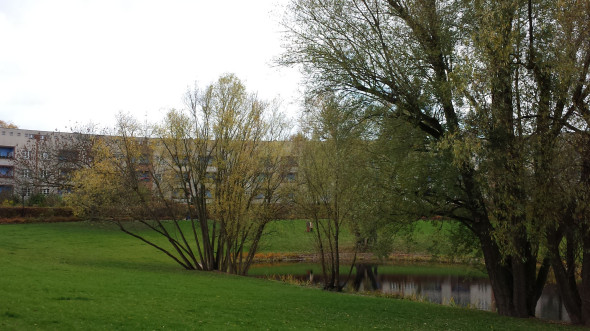
‘It is not surprising that architects and urban planners only see the static image of what is built and are against the idea of their houses becoming factories, their buildings shelters for the poor, their churches piles of rubble. But this is exactly what time does. Yet old-fashioned planners insisted on making plans for a period that embraced one, two, or even three generations, in an era in which one generation had thrown the human discoveries of fifty generations out the window’.
As Reiner Nagel’s words show, Martin Wagner’s influence is still at work, providing a valuable lesson for all urban speculation. But I will leave the reader free to watch the rest of the interview and decide if my reading has any merit.
conrad-bercah
Questo sito usa Akismet per ridurre lo spam. Scopri come i tuoi dati vengono elaborati.

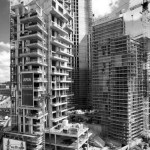
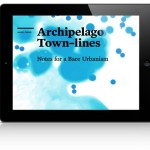
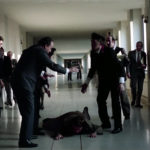




Lascia un commento